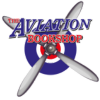Description
At the start of the First World War, the RFC was nonexistent. The initial military aeroplanes, Farman’s HF.20s, were basic structures made of wood, bamboo, linen, and wires. The engines were weighty and lacked significant power. Their performance was subpar. These early aircraft were unarmed and primarily served as training and reconnaissance planes. The quantity of planes was limited.
The LVA, and later also the MLD, were only able to buy very limited aircraft abroad. Fighter planes that were interned marginally strengthened the Dutch air force. The main problem was that there were no training planes. These were bought in Sweden and America. Eventually, Trompenburg made his ‘own’ training aircraft. In the non-industrial Netherlands, the construction of this Spijker V.2 was a great step forward. When Anthony Fokker came to the Netherlands from Germany in 1919, he took his robust and reliable aircraft with him. The engines had been given great power and the performance had improved considerably. The planes had become weapons in their own right. The aircraft were designed for a specific task and could be used as fighters, scouts or bombers. At the end of the war it became dangerous for student pilots to take to the skies inexperienced with the great power and manoeuvrability of modern aircraft. This created a demand for aircraft specially designed as training aircraft. At the end of the war, Fokker designed the V.43: Fokker’s first school aircraft.
You could go to Fokker for any kind of aircraft. In addition to the D-series fighters, a new C-series of reconnaissance, B-series flying boats, T-series torpedo and bombers was set up. In the civil field, Fokker started with the F-series passenger aircraft. In order to bind potential customers to you, it was necessary to make flyers familiar with your products from the start. For example, the S-series school planes were set up immediately after the war. Student pilots could do their first lessons on the S-aircraft and then switch to the C.I and the D.VII. The LVA and the MLD were the major users of the Fokker S-aircraft. Abroad, the teaching boxes did not catch on. At the MLD and the LVA, a complete generation of pilots received training on the Fokker S.III and the S.IV. The devices were used intensively. They made many emergency landings and air accidents, and were mostly completely rebuilt. After fifteen years (!), the Fokker S.9 was purchased as a replacement for both courses. The last three S.9s were built after the war. They were Fokker’s last biplanes, which were still built in the old mixed construction method.



